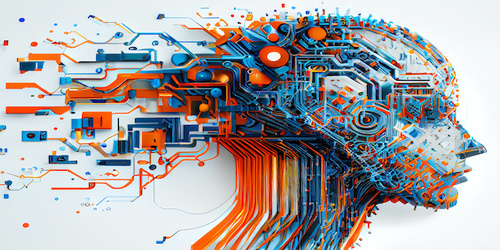Beyond the Hype: When LLMs Fail

Here are the twelve use case families of AI:
- Prediction and Forecasting: Predicting future outcomes based on historical data. Businesses use AI to forecast product sales by analyzing past data.
- Autonomous Systems: AI empowers machines to operate independently, such as drones for autonomous inspection of power lines.
- Planning and Optimization: AI aids in decision-making by finding optimal solutions, valuable in urban planning for minimizing traffic disruption.
- Decision Support: AI enhances human decision-making by providing insights and predictions to assist in informed choices.
- Recommendation Systems: AI suggests products or content tailored to user preferences, as seen on platforms like eBay and Spotify.
- Classification and Segmentation: AI categorizes data for analysis, like classifying loan applicants based on financial profiles.
- Intelligent Automation: AI combined with automation improves efficiency. Digital twins enable predictive maintenance in manufacturing.
- Perception: AI processes sensory data to understand the environment, such as traffic monitoring systems detecting driving violations.
- Anomaly Detection: AI identifies unusual patterns or outliers in data, such as detecting potential issues in power grids.
- Conversational AI: AI chatbots provide human-like interactions, answering queries and resolving issues.
- Content Generation: AI creates content like text, images, and videos. Tools like ChatGPT illustrate this capability.
- Knowledge Discovery: AI uncovers hidden patterns and insights in large datasets to aid in data-driven decision making.
Six Common AI Techniques
The six common AI techniques are foundational methods used in various AI applications:
- Traditional Machine Learning: Includes techniques like linear regression, clustering, classification, and decision trees.
- Simulation: Creates virtual models of real-world systems for experimentation and prediction.
- Optimization: Finds the best solution within constraints, crucial for pricing strategies and other applications.
- Rule-Based Systems: Operates based on predefined rules derived from expert knowledge, valuable for decision making.
- Graph-Based Methods: Uses graph data structures to represent entities and relationships, useful for complex analysis.
- Generative Models: Creates new content, such as text and images, with models like ChatGPT demonstrating this capability.
AI Techniques and Use Case Suitability
The matrix below shows that certain use case families are more suitable for certain AI techniques. The Low, Medium, and High refer to the stability and reliability of the AI techniques utilized in the corresponding use case families.

